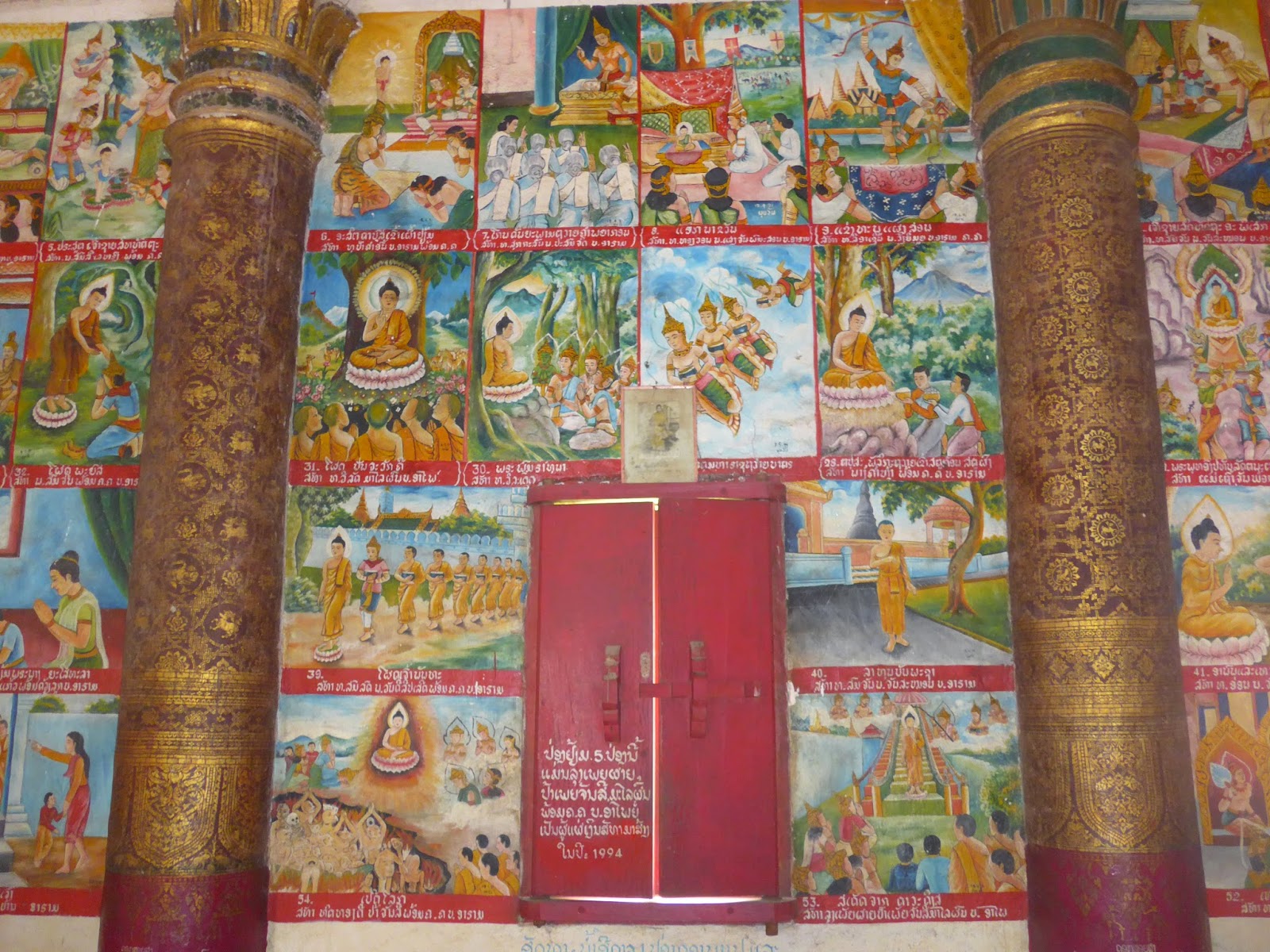Six day trip to Laos - day 5
Breakfast in the Aussie Bar, just around the corner from the Villa - big and good
A short walk to two adjacent temples that share common grounds.
The Buddhist temple of Wat Aham was constructed in the early 19th century. Its main hall is known to have been built in 1818 by King Manthatourath, who ruled from 1817 to 1836, from a dynasty of Lao Kings based in the then capital of Luang Prabang.
Wat Aham is known as the "Monastery of the Open Heart". It is quiet and serene here, (temporarily breached when children from the near-by school are passing through the grounds!)
The serenity is in contrast to its contentious past when it served as a mediating ground between the animist Religion of Spirit Guardians and Theravada Buddhism.
In the same grounds is Wat Wisunalat, an ancient monastery.


Breakfast in the Aussie Bar, just around the corner from the Villa - big and good
A short walk to two adjacent temples that share common grounds.
The Buddhist temple of Wat Aham was constructed in the early 19th century. Its main hall is known to have been built in 1818 by King Manthatourath, who ruled from 1817 to 1836, from a dynasty of Lao Kings based in the then capital of Luang Prabang.
'The interior of the sim is bright and colourful. Structural elements of pillars and beams are painted in reds and gold, while the interior walls are covered with murals depicting Buddhist theological precepts.
There are scenes of a variety of torture and suffering experienced by those who inflicted evil on others (very gory), as well as elements reflective of the historic past of the city'.
The date of the founding of Wat Aham itself is not known, though there was a wat on the site before King Manthatourath.
Wat Aham is known as the "Monastery of the Open Heart". It is quiet and serene here, (temporarily breached when children from the near-by school are passing through the grounds!)
The serenity is in contrast to its contentious past when it served as a mediating ground between the animist Religion of Spirit Guardians and Theravada Buddhism.
In the same grounds is Wat Wisunalat, an ancient monastery.

This Wat was originally built in 1513 during the reign of King Wisunarat (1501-1520) and represents the earliest style of Lao temple architecture. Wat Wisunalat is Luang Prabang's oldest operating temple.
The sim today continues its existence as a museum of valuable religious art, with numerous centuries-old Buddha statues in bronze and gilded or unadorned wood, ordination precinct stones and other religious objects.
Also in the grounds is the unique 'Stupa of the Great Lotus', originally erected in 1514. It is known more popularly as That Makmo, the Watermelon Stupa, because of its rounded dome.

The dome stylistically reflects a Sinhalese influence and is the only stupa of such a shape in Laos, and perhaps even in Cambodia or Vietnam.
There is also a gong
and boats. The monks join in the annual boat races, a big event here, as (I have seen) in Cambodia and Myanmar/Burma.
Back to the Villa for coffee on the balcony, via some interesting back streets
In our last afternoon here, a slow relaxing walk along the edge of the two rivers.
the convergence again
'old days' retouched
the ferry
sunset
This is a beautiful place to be
We have been very lucky with the weather. Warm and no rain
Time to eat. Fish and veg in the passageway
On the way back to the Villa, a foot massage. oooooohhh, so good after all that walking.
I am ready for yet another good night's sleep. Goodnight and happy dreams to you all.


















No comments:
Post a Comment